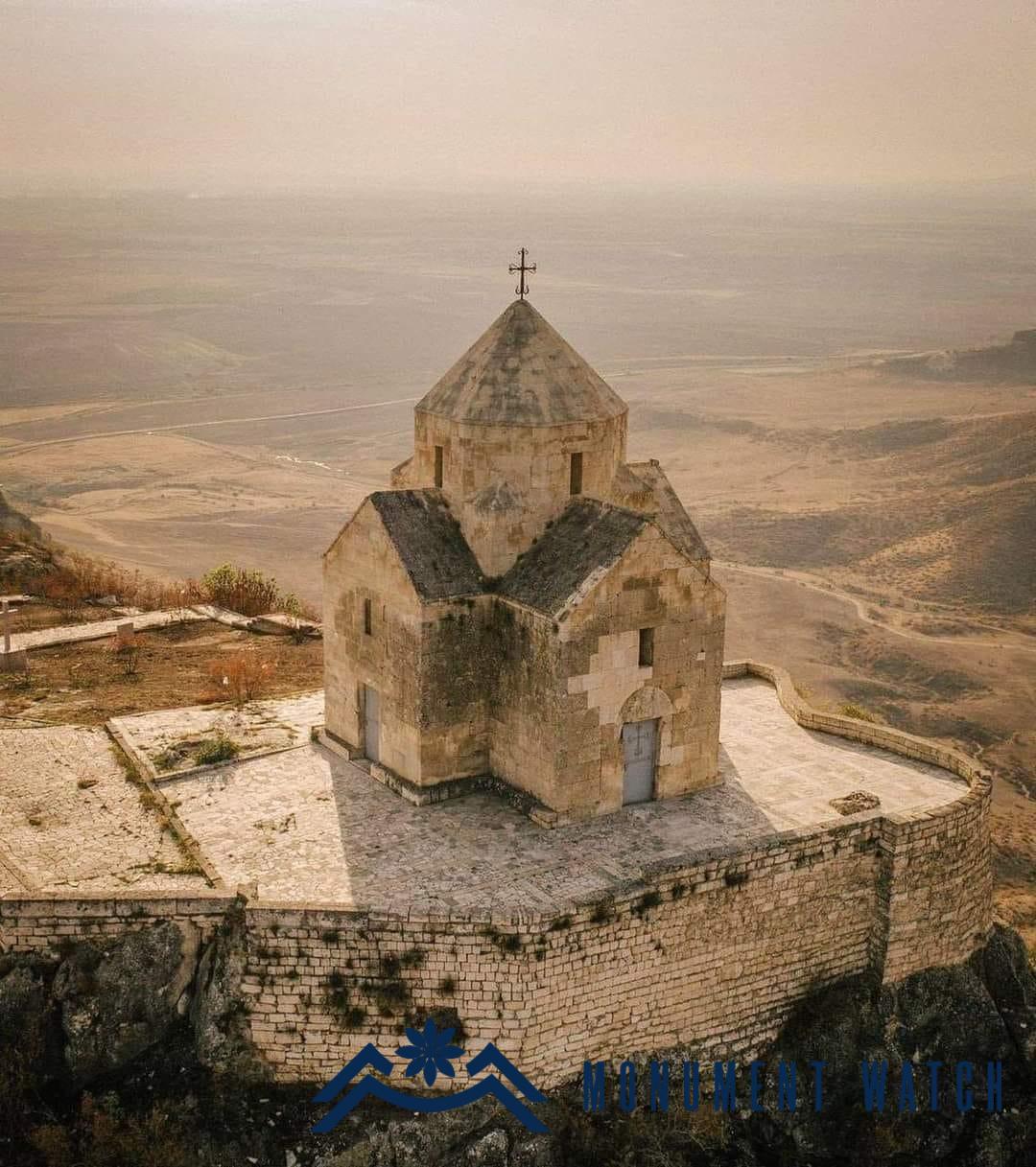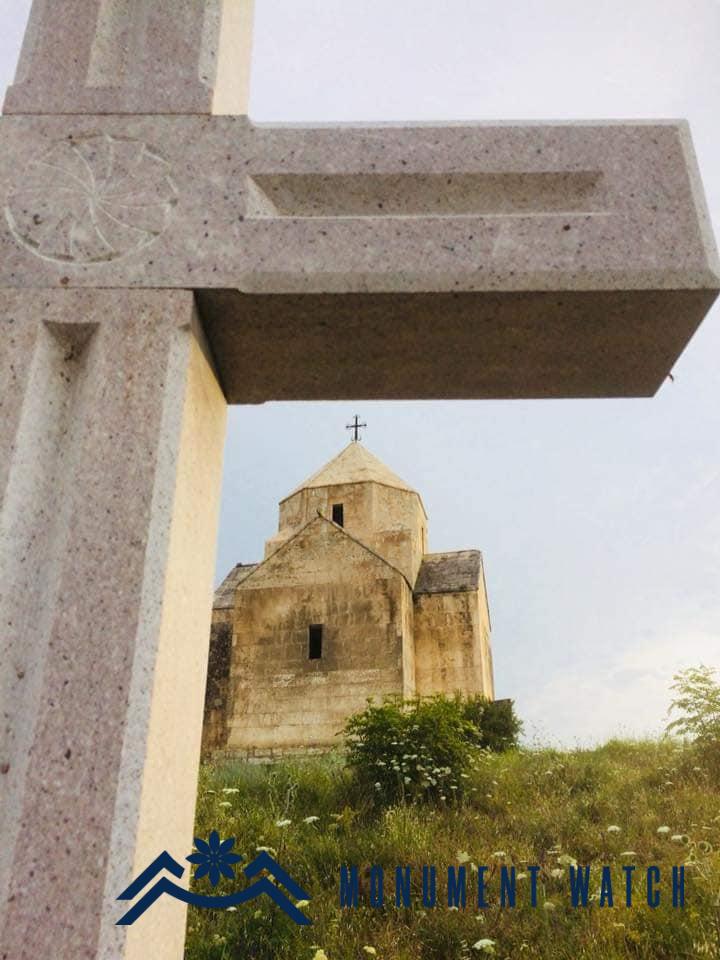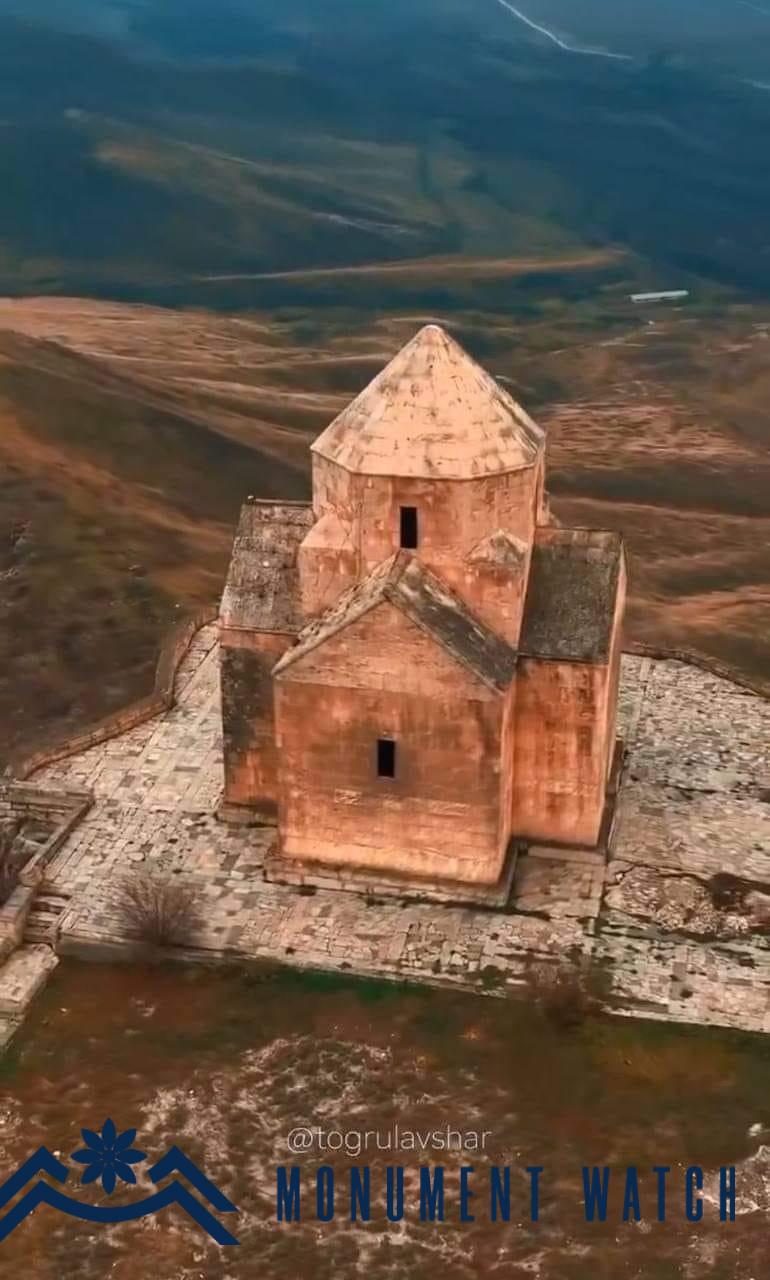Azerbaijan Removes Cross from Vankasar Church
At the end of January 2024, a video was posted on the Azeri togrulavshar Instagram page, where the early medieval church on the top of Mount Vankasar was filmed (https://www.instagram.com/reel/C20Lm14rot5/?igsh=MTg4aGJldTJsMm8ycw%3D%3D&fbclid=IwAR3kvKbL-hXDc07D8M-jiMH6pCApeMOVUknJL34G8RI8Y3B9mcgjW6GivJw).
The video reveals that the cross atop the dome of the church has been removed.
The church follows the architectural style of small cross central-domed early medieval Armenian churches, bearing resemblance to structures such as those in Talin, Karashamb, and Aylaber in terms of its volume and spatial layout. It dates back to the mid-7th century.
All the stones in the church bear the marks of the craftsmen, with the majority being Armenian letters, similar to the marks found on stones in the 7th-century church (temple) of Sisian.
The Vankasar church endured significant losses during the "Azerbaijani" restoration efforts in the 1980s. The natural-historical landscape surrounding the monument was disrupted, with the giant rock upon which the temple stands being stoned and paved over. The area has been further developed with buildings serving entertainment and leisure purposes. The Azerbaijani side has undertaken a "restoration" effort that resulted in a volume on the foundation of the church which deviates from the original structure. In essence, under the guise of preservation and restoration, the Azerbaijani side has inflicted cultural vandalism upon the monument. The so-called restoration of the Vankasar church during the Soviet era serves as a poignant example of the threats facing Christian monuments in occupied Artsakh if the Azerbaijani side were to undertake efforts to "restore" them to their perceived authenticity.
The church underwent a "restoration" process that disregarded its structural and symmetrical features. Cornices were misaligned on the facades, and deliberate destruction occurred to the Armenian inscription and the cross sculpture at the western entrance lintel. Additionally, window openings were redesigned. Changes were made to the methods of implementing key structural elements such as trumpets, domes, vaults and arches. A dome was added to the church, which is not in keeping with its original medieval architecture.
In 1986, during the Azerbaijani "restoration" works, S. Karapetyan and A. Ghazaryan authenticated two partially forged inscriptions, which were subsequently intentionally damaged. At that time, the khachkar of 1263, documented by Khachik Reverend Dadyan, was not in its original place. Additionally, other khachkars that were once erected around the church have also been affected. One such khachkar, dating back to the 13th century, was relocated by Azerbaijani authorities to the Aghdam Stone Museum. Furthermore, the separate components of the central cross on the khachkar were intentionally scraped in advance to obscure its identity. Similarly, the cross composition on the western lintel of the church was also scraped and smoothed by Azerbaijani authorities.
During the first Artsakh war, the church of Vankasar sustained damage. Above the battlement on the western front, a projectile caused a sizable hole, posing a threat to the stability of the wall. In the autumn of 2011, the Tourism Department of the Republic of Artsakh conducted cleaning, repair, and beautification efforts at the site. Partial repair work was completed by January 2012, and a cross was installed on the church's dome. The damaged section of the western facade underwent reconstruction, and metal doors were installed at the entrances. Additionally, restoration work was carried out in the interior, particularly in the eastern sanctuary where the stage has been restored ((See more details about the church: https://monumentwatch.org/en/monument/the-church-of-vankasar/).
After the territory was transferred to Azerbaijani control in November 2020, the Azerbaijani flag was placed directly on the cross atop the dome of the church.
Our response
The Hague Convention of 1954, which serves as the foundation for various international treaties, stipulates in its first article that cultural property, "regardless of its origin or ownership, constitutes the movable or immovable heritage of great importance to all peoples" https://www.unesco.org/new/fileadmin/MULTIMEDIA/HQ/CLT/pdf/1954_Convention_EN_2020.pdf.
Furthermore, the blatant distortion of the monument also contravenes the ruling of the International Court of Justice in The Hague on December 7, 2021, which mandates that "Azerbaijan is obligated to undertake all necessary measures to prevent and penalize acts of vandalism and desecration perpetrated against Armenian cultural heritage..." (International Court of Justice, Application of the International Convention on the Elimination of All Forms of Racial Discrimination (Armenia v. Azerbaijan), 7 December 2021, No. 2021/34). Let us also underscore that the harm inflicted upon the cultural assets of any nation represents a blow to the cultural heritage of humanity as a whole, given that each nation contributes uniquely to the global cultural diversity.
The removal of the cross from the church undermines the integrity of the structure. As affirmed at the 36th UNESCO expert meeting, "integrity is the ability of heritage to ensure and maintain its significance over time."
Preservation according to the principle of integrity presupposes, above all, the safeguarding of elements that convey heritage values, while considering both individual components and their interrelation within the whole: Operational Guidelines for the Implementation of the World Heritage Convention, UNESCO, and Intergovernmental Committee for the Protection of the World Cultural and Natural Heritage, WHC. 11/01 November 2011, paragraph 119. This operating guide provides further clarification, stating that "To maintain integrity, all features of the heritage must remain intact" See: Operational Guidelines for the Implementation of the World Heritage Convention, UNESCO, Intergovernmental Committee for the Protection of the World Cultural and Natural Heritage, WHC. 11/01 November 2011, paragraph 92.


